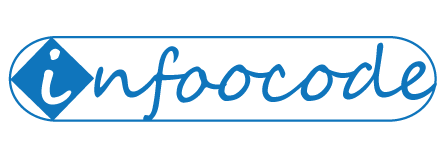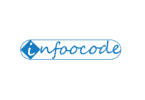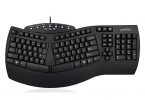As you look to making your business paperless, you will need to convert your paper documents into electronic or digital files. You’ll definitely need a secure cloud store and more importantly, a reliable scanner that will effectively reproduce your hard copies into soft copies.
Contents
But which is the best scanner to buy?
To keep you from making the common mistakes that many businesses make while investing in an office scanner, we have compiled a detailed guide on how to choose the right scanner that suits your business needs.
1) Mode of Scanning
For starters, there are two main modes of scanning: Centralized scanning and decentralized scanning 프리미어 cs5.
Understanding the one that works for you will determine the size or type of scanner that you should select.
Centralized scanning entails having a bigger, higher speed scanning machine, or network of scanners on a central location where all your business scanning needs are handled. Depending on your needs, you can have a dedicated scanning and printing room. With this mode of scanning, files are delivered to a central scan station that serves many departments or users.
On the other hand, decentralized scanning involves multiple departmental level or several desktop-level scanners. In this case, each department or office in an organization can have a scanner to carry out its individual scanning needs.
A scanner for centralized scanning would have to be more powerful and speedier. For decentralized scanning, you can consider budget options that work for each department 시그널 16회.
2) Type of Document
Your scanner’s capabilities should be in line with your document characteristics.
With this, you will need to review the nature of documents that you intend to scan in terms of:
a) Paper Size
Are all your papers 8.5 x 11 or some are smaller or larger? Are your documents double or single-sided?
Answering this will let you know the capacity of document feeder you need for scanning your papers, and whether your scanner should be duplex or simplex – the ability to simultaneously scan the front and back of a page.
You can also consider a scanner with specialized features that handle unique requirements like scanning driving licenses, insurance cards, and CAD drawings.
b) Document Characteristics
Do your files have highlighting, ink, or handwriting on them? Are they colored or black and white?
Answering this will help you know whether you need a scanner with an image processing software 연세대학교 한글.
Without proper image processing, the scanner could end up imaging poor results on highlights, colored paper, and other text features. Get some valuable tips on Medium about image processing. Some scanners have inbuilt image processing software, while others allow you to install special features.
c) Type of Paper
Are you looking to scan normal office paper or is it carbon copy, a card stock, or a multipart form? Is your paper thin or transparent?
Your scanner’s functions should match the type of your paper so that your documents can be properly fed as you minimize paper jams. Constantly stopping your scanning process to fix feed problems and paper jams can be very frustrating and time-wasting Download vuescan.
3) Cost, speed and Size
The price of a scanner is directly related to its speed and capabilities. Of course, a scanner that is capable of processing more pages per minute will cost more.
You will need to consider the number of pages you will be scanning daily, weekly, or monthly. This will help you in determining how long it will take to complete the scanning process with a particular scanner.
For instance, a scanner rated 10 PPM (Pages per Minute) will take 100 minutes to scan 1000 pages. Similarly, a scanner rated 25 PPM is likely to take 40 minutes to handle the same load. Even though this might cost more, you may recoup its return on investment on labor within a short period.
For duplex scanners (scanners that can simultaneously scan both sides of a document), it would be good to consider the Images Per Minute (IPM) rating Download the web address video. The higher the IPM, the more effective the scanner will be.
Business-class scanners are categorized based on their size and performance. This can be broken down into:
a) Workgroup
These scanners are relatively small and are meant for desktop scanning. Their speeds range from 20 to 30 pages per minute, and 40 to 60 images per minute. A good workgroup scanner will cost from $400 to $1,500.
b) Departmental
Meant for semi-centralized scanning, departmental scanners are installed in a dedicated scan station and used in departmental or group setting. These scanners can scan several thousand pages in a day, and are relatively big in size. Most of these have 30 to 60 PPM and 60 to 120 IPM scan speeds Cisco packet tracer. They cost from $1,500 to $3,500.
c) Production
Suitable for fully-centralized scanning, production scanners are meant for high-volume scanning and full-time scanning environments. Production scanners are typically installed as fully dedicated scan stations and have high-performance scanning software for capturing volumes of files.
The scan speeds for these kinds of scanners range from 60 to 200 PPM and 120 to 400 IPM. They cost from $3,000 to $80,000.
4) Imaging Quality
Scanning is only successful if the papers you have converted into digital copy can be read well as they were before scanning. With this, the image quality offered by a scanner should be enough to reproduce a document that looks exactly like the original copy.
Today, document scanners have many integrated enhancement abilities 일루전 게임.
You should look for a scanner that is capable of enhancing image quality. Good image processing “cleans” the document by correcting color, adding more light to a dark copy, removing borders, color dropout, removing hole punches, and highlighting a host of functions such as ink types and pencil marks.
The scan quality will also be determined by the scanner’s optic or lamp technology. Good optic technology will increase the cost of a scanner, but will pay off both in terms of longevity of use and image quality.
5) Software Compatibility
Whichever the scanner you choose, it should have the capability to work with the document or imaging management software deployed by your organization. With this, you will be able to scan from printer to computer with ease.
Most scanners support a TWAIN driver or an ISIS scanner driver Download Dreamweaver cs5. Since the driver ships with the scanner, it is prudent to check if your scanner has drivers that support the software packaging you will be using it with.
6) Warranty
With the high costs that scanners come with, it is only reasonable to go for one that has suitable warranty terms. A warranty will keep you worrying less about your equipment breaking down due to a manufacturing fault, and save you from hefty replacement and repair costs.
Reputable scanner manufacturers offer reasonable agreements and warranties ranging from scanner or part replacement to onsite service technicians. A more extended warranty is a sign of the manufacturer’s faith in their product.
Wrap Up
A great scanner is capable of producing an image that is of better quality than the original document Sketch-up free. With this, it makes sense to spend more for a scanner with better image processing features. Before making a purchase though, consider your business scanning needs, the extent of scanning, and the money you have to spend.
We hope that our scanner purchasing tips will help you choose the best model that suits your unique business needs. All the best!
Frequently asked questions
Q1: What is the best scanner for documents?
Ans: Desktop Fujitsu Scan Snap ix 1500 is ranked number one by many reviewers. You can call it the best scanner.
Q2: What is the cost of a scanner?
Ans: The cost of a scanning project varies with the type of scanner. Usually, scanning a page costs between 7 cents to 12 cents. It means you can scan a book under 50 dollars Download The Pigeon King Tokki. Big scanning projects decrease the scanning cost down to 6 cents.
Q3: What are the types of scanners?
Ans: There are four common types of scanners flatbed, sheet-fed, handheld, and Drum scanners. You can choose any according to your requirements.





Leave a Comment